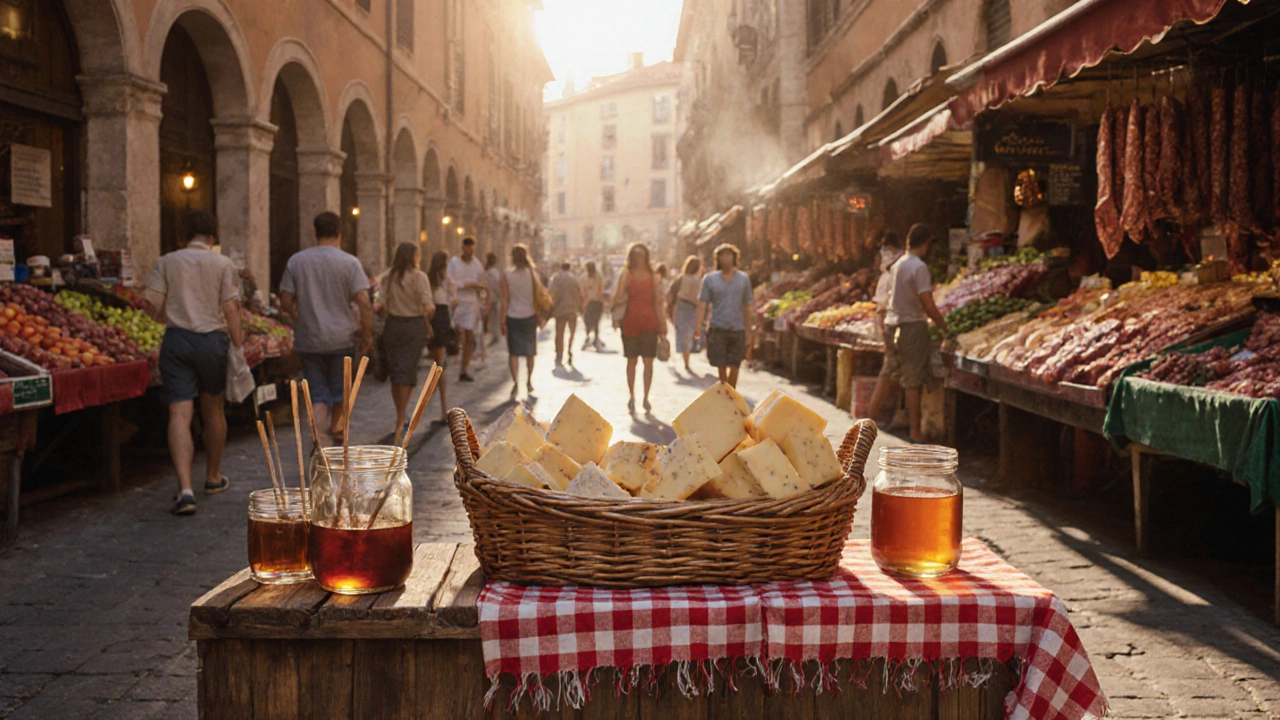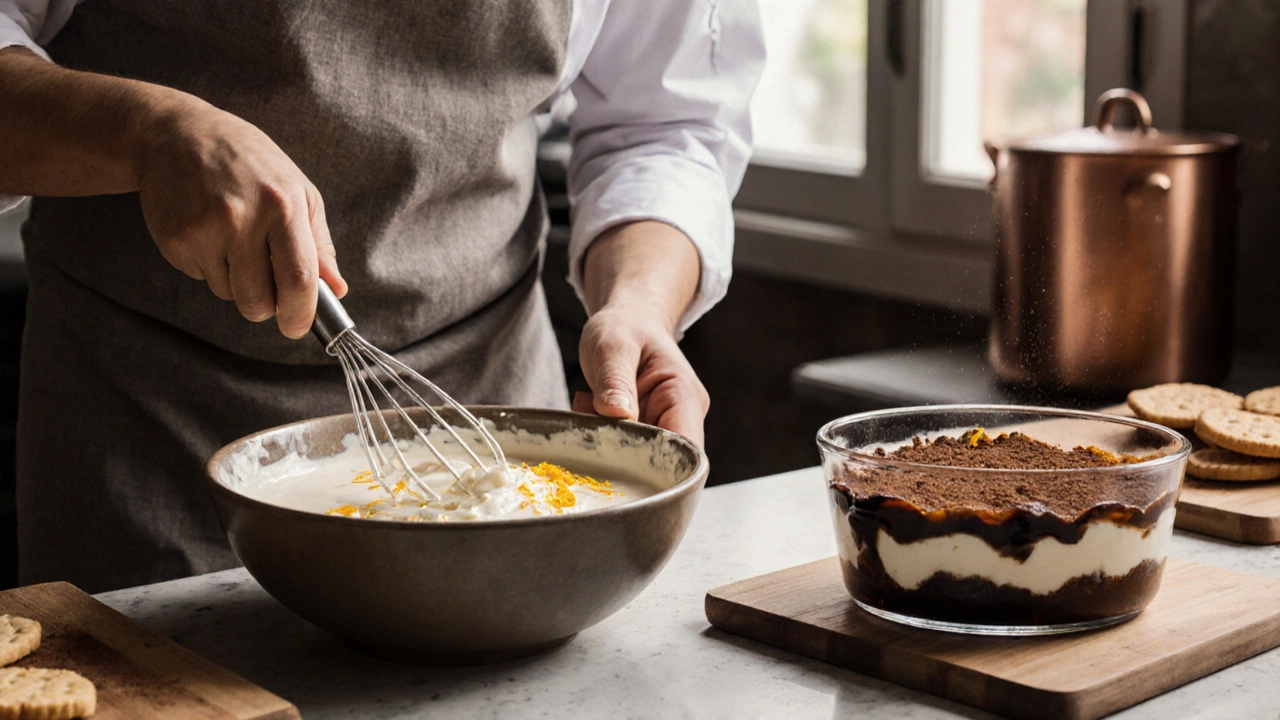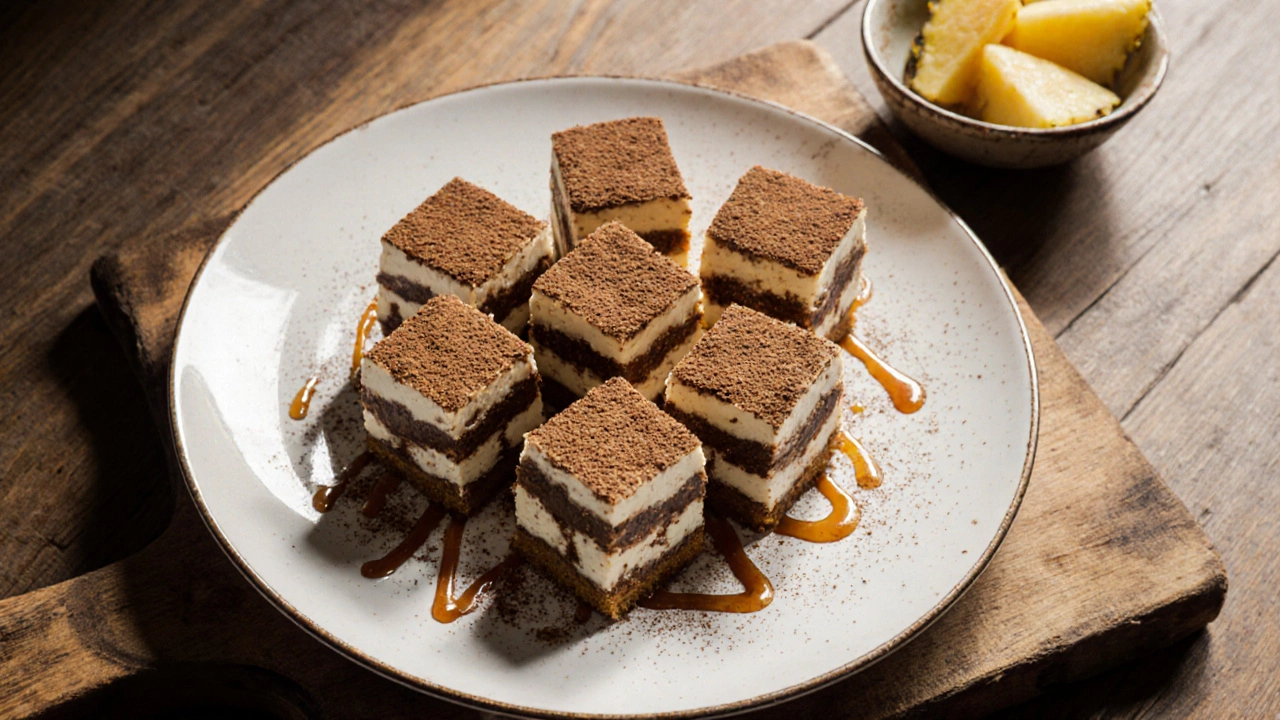
Tiramisu Substitute Calculator
Substitute Mascarpone with Cheese Coalho
Use this calculator to adjust your tiramisu recipe when using Cheese Coalho instead of mascarpone.
Your Substitution Results
Cheese Coalho: 0 g
Condensed Milk: 0 ml
Pro Tip
For best results, blend the coalho mixture with a touch of orange zest. This replicates the subtle sweetness of mascarpone while maintaining coalho's firmer texture.
Imagine strolling through a bustling market in Rome, the scent of fresh espresso mingling with the salty tang of cured meats. You spot a stall selling a cheese you’ve only ever tasted on a beach in Brazil - Cheese Coalho is a soft, slightly squeaky curd cheese from Northeast Brazil, traditionally grilled on sticks or served with a drizzle of honey. The question on everyone’s mind: can you actually get cheese coalho Italy without flying back home?
What Exactly Is Cheese Coalho?
Cheese coalho ("coagulated cheese") is made from cow’s milk that’s been heated, curdled with rennet, and pressed just enough to keep a moist texture. It’s low‑fat, mildly salty, and has a firm bite that holds up to grilling. In Brazil it’s a staple at beachside grills, paired with pineapple or guava paste. Because it’s fresh, it doesn’t age like Parmigiano‑Reggiano or Pecorino Romano, which makes it perfect for quick recipes.
Why Would Italians Care About Cheese Coalho?
Italian cuisine already loves fresh, delicate cheeses - think mozzarella di bufala, ricotta, and mascarpone. Yet the rise of global food trends and Brazilian restaurants in cities like Milan, Florence, and Rome has created a niche demand. Chefs experimenting with fusion desserts, such as a Brazilian‑Italian tiramisu, look for a cheese that won’t melt into a puddle but will add a subtle tang. That’s where cheese coalho steps in.
Where to Hunt for Cheese Coalho in Italy
- Italian specialty import shops: Stores that focus on South American products (e.g., “Mercado Latino” in Milan) often import small‑batch coalho.
- Brazilian eateries: Restaurants like “Bossa Nova” in Rome keep a refrigerated supply for authentic snacks.
- Farmers’ markets: In the Veneto region, some producers import fresh cheese for the summer market.
- Online Italian grocery platforms: Websites such as “Eataly.it” occasionally list imported fresh cheeses; check the refrigerated section.
- Direct import from Brazil: If you have a kitchen with a small freezer, ordering through a certified EU importer guarantees freshness.

How to Verify Freshness and Authenticity
- Check the sell‑by date - coalho should be consumed within 10‑12 days of production.
- Feel the texture: it should be firm yet spring back slightly when pressed.
- Smell the cheese - a mild milky scent without any sour notes indicates proper storage.
- Look for the label "Queijo Coalho" or its Portuguese spelling; counterfeit versions may be labeled simply as "fresh cheese."
Cheese Coalho vs. Classic Italian Dessert Cheeses
| Attribute | Cheese Coalho | Mascarpone | Ricotta | Mozzarella di Bufala |
|---|---|---|---|---|
| Milk base | Cow | Cow (or cream) | Cow/sheep | Buffalo |
| Texture | Slightly squeaky, firm | Velvety, spreadable | Granular, slightly fluffy | Elastic, soft |
| Fat content | Low‑to‑moderate (≈25 %) | High (≈45 %) | Low‑moderate (≈12 %) | Medium (≈30 %) |
| Typical use | Grilled sticks, salads, desserts | Tiramisu, cheesecakes, frosting | Fillings, pastries, cannoli | Caprese, pizza, salads |
| Shelf life | 10‑12 days refrigerated | 1‑2 weeks refrigerated | 2‑3 weeks refrigerated | 5‑7 days refrigerated |
These differences matter when you substitute coalho for mascarpone in a tiramisu. Coalho adds a firmer bite and a milder flavor, which can be balanced with a splash of sweetened condensed milk or a dusting of cocoa.

Fusion Dessert Idea: Brazilian‑Italian Tiramisu
Here’s a quick recipe that lets you test coalho’s performance in a classic Italian dessert.
- Blend 200 g of softened cheese coalho with 100 ml sweetened condensed milk and 2 tbsp of orange zest.
- Whisk 2 egg yolks with 50 g sugar until pale, then fold in the coalho mixture.
- Dip ladyfinger cookies quickly into a strong coffee‑rum mixture; layer them in a glass dish.
- Spread a thin layer of the coalho cream over the biscuits, repeat twice, finishing with cream.
- Refrigerate for at least 4 hours. Top with cocoa powder and a drizzle of caramel before serving.
The result is a tiramisu that holds its shape longer, with a subtle Brazilian twist that wow’s any palate.
Common Pitfalls and How to Avoid Them
- Over‑grilling: Coalho can become rubbery if cooked too long. Grill just until grill marks appear.
- Improper storage: Keep it in a sealed container with a thin layer of whey to maintain moisture.
- Substituting the wrong cheese: Mascarpone’s creaminess is not replicated by high‑fat cheeses like gorgonzola; stay with coalho or ricotta for similar texture.
Bottom Line: Is Cheese Coalho Available in Italy?
Yes, but it’s a niche product. Spotting it requires a bit of hunting - specialty import shops, Brazilian cafés, and online Italian grocers are your best bets. Once you locate it, the cheese opens up playful cross‑cultural recipes, especially for desserts that benefit from a firmer, less sweet curd.
Can I substitute cheese coalho for mascarpone in traditional tiramisu?
Yes, but expect a firmer texture and milder taste. Mix coalho with a touch of sweetened condensed milk to mimic mascarpone’s richness.
Where is the freshest cheese coalho sold in Italy?
Specialty Latin‑American import shops in Milan and Rome often receive daily shipments. Check the refrigerated aisle for fresh‑pack dates.
How long does cheese coalho keep in an Italian fridge?
Typically 10‑12 days if kept at 4 °C and sealed. Store it in its original brine or a thin whey layer to preserve moisture.
Can I order cheese coalho online in Italy?
Yes. Platforms like Eataly.it and Amazon.it sometimes list "Queijo Coalho" under imported cheeses. Look for sellers with EU food‑safety certification.
What other Italian cheeses pair well with coalho in recipes?
Ricotta works nicely in layered desserts, while a thin slice of Pecorino Romano can add a salty crunch to grilled coalho sticks.